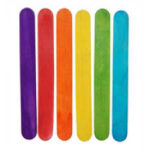..
Montessori Lessons Age 0 to 3 (Infant)
Montessori Lessons for Infants Age 0 to 3
Montessori Unrolling and rolling a floor mat Lesson Activity
..
Montessori Unlocking and locking padlocks Lesson Activity
..
The Montessori Red Rods Lesson Activity
The Montessori Red Rods are used to teach Length. There is a definite relation between the ten pieces of each series. In the material for length the shortest piece is a unit of measurement for all the rest; the second piece is double the first, the third is three times the first, etc., and, whilst the scale of length increases by ten centimeters for each piece, the other dimensions remain constant.
Montessori Materials, Fruit Nomenclature Cards, Age 1 to 6
Montessori Materials, Vegetable Cards, Age 1 to 6
How to learn your ABC the Montessori way
Learning the Alphabet the Montessori Way is the most fundamental building block to language.
Montessori Herbs Materials, Age 3 to 6
The Montessori Loop Beading Lesson Activity for Infants Age 8 Months to 3 Years
A simple yet effective sensorial exercise for Ages 6 months – 3 years
The Montessori Small Stick Posting Lesson Activity for Infants Age 1 to 3 Years
A simple yet effective sensorial exercise for Ages 6 months – 3 years
The Montessori Large Stick Posting Lesson Activity for Infants Age 1 to 3 Years
A simple yet effective sensorial exercise for Ages 6 months – 3 years
The Montessori Token Posting Lesson Activity for Infants Age 1 to 3 Years
A simple yet effective sensorial exercise for Ages 6 months – 3 years
The Montessori Drinking Water From a Cup Lesson Activity for Infants Age 1 to 3 Years
An exercise to introduce practical life concepts to children from 2 years of age onwards
The Household Items (Treasure) Basket
This is one of the first sensorial exercise you can introduce to children from Age 6 months onwards. It uses simple household items to develop the childs senses
Montessori Sandpaper Numbers Lesson Activity
..











 '
'